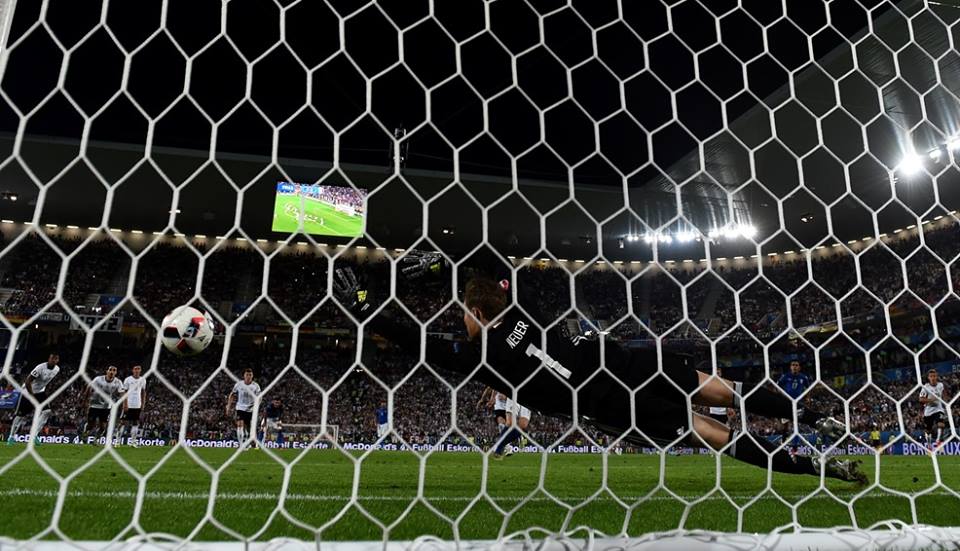From Grosics to Neuer - The evolution of sweeper keepers in modern football
Football is a game that has been changing constantly and it is quite evident when one compares the equipment, the formations, and the roles of years gone by.

Over the years the world of football has witnessed the professionalization of the sport, introduction of the Bosman rule, synthetic leather balls and light weight leather cleats to the newest addition - goal line technology. One other significant change that football has undergone in recent times is the death of wingers. Wide players are no longer hired to hug the touchline and provide crosses to tall lumbering strikers. Instead, the game has evolved to include versatile wide strikers who can not only cross the ball but also cut in and take lethal shots on goals. Moreover, the full backs are now required to provide width for the team. However, there is a newer evolution that has taken world football by storm.
The concept of sweeper keepers is something that is creating a huge buzz in European Football. However, it should be known that this isn’t a new concept but rather it has been accepted due to more suitable formations used today. Manuel Neuer is considered to be the most revolutionary sweeper in the history of the sport having taken the position to new levels. The German shot-stopper is eager to rush off his line to make crucial interceptions and tackles. But Neuer isn’t the inventor of the sweeper-keeper role. When we think of goalkeepers going on an adventure into midfield, Rene Higuita is the first name that jumps to minds, the Colombian whose claim to fame was the famous scorpion save.
Rene Higuita came into prominence between 1987 and 1999 during his stints for Colombian club Atletico Nacional and the Columbian National Team. Often known for his tendency to go out on quests with the ball, El Loco was sometimes the root cause of many blunders one of which led to Colombia’s exit in 1990 world cup. Higuita was indeed a sweeper keeper, but he represented everything a sweeper keeper is not supposed to do, irrespective of his impressive goal tally. Higuita, however, wasn’t the father of this new style of goalkeeping but rather just a reappearance of a lost trend that failed to catch on.
The Pioneers
To find the origin of the sweeper keeper one must dig deeper into history and land in the 1950’s when two goalkeepers graced the football field with their presence. Gyula Grosics and Amadeo Raul Carrizo were two exceptional goalkeepers who played in two separate continents but were united by their unique style of goalkeeping that allowed their attack-minded teams to focus on
With formations such as 2-3-5 and 3-4-3 being used in those days, an additional player who could make tackles, interceptions, as well as, play an offensive pass in the form of a goalkeeper was a blessing to teams. Not only was their involvement in the game new and revolutionary but also extremely efficient as teams would often find themselves outnumbered somewhere between the half-line and the 18-yard box during a counter attack.
Gyula Grosics is considered to be one of the first goalkeepers to be deployed as a sweeper keeper as part of the fearsome Hungarian National team that included the likes of Ferenc Puskas. Known as the ‘black panther’ due to his all black outfit,
Way over the Atlantic playing in a club called Riverplate was Amadeo Carrizo an Argentinian known for a similar goalkeeping style. Being more skilled than his Hungarian counterpart, Carrizo would even participate in starting attacks for his team. He is considered to be one of the best goalkeepers to emerge from South America and was famous for being the first goalkeeper to don gloves. As one of the two pioneers of the sweeper-keepers, Carrizo’s contribution to the goalkeeping world will be forgotten.
Football Today
Neuer’s on-field antics re-introduced the modern day sweeper keeper to the world of football. Today, every league has its share of sweeper keepers and managers too seem to prefer having a keeper who can not only contribute in
Managers who have a sweeper keeper at their disposal are able to employ a higher defensive line which enables them to press and attack the ball with a lot more intensity that other teams. Teams like Bayern Munich often employed a three man
Pep Guardiola’s recent ostracizing of Joe Hart and the signing of Claudio Bravo is evidence that suggests the Spaniard’s preference for a sweeper keeper over a good shot stopper. With Tottenham and Manchester United already possessing the keepers who can easily pass the ball out of defense, it’s only a matter of time before playing as a sweeper becomes a must for all goalkeepers.The world of football is such that one can expect changes constantly and unpredictably. As few teams have begun to use attacking midfield players as "false nines", it could be said the next evolutionary step could be the disappearance of out-and-out strikers. There is a possibility that teams could soon train a midfield player with exceptional work rate and finishing so that not only are there enough players to crowd the midfield but anyone can step up to score. Giving them an extra pair of legs to win all the midfield battles. However, until such time the world shall stand amazed with new sets of sweeper keepers who will come out of the academies into the footballing world.

Comments
Sign up or log in to your account to leave comments and reactions
0 Comments